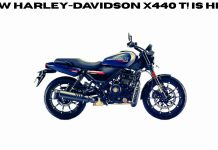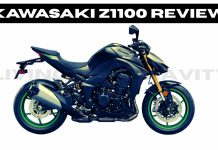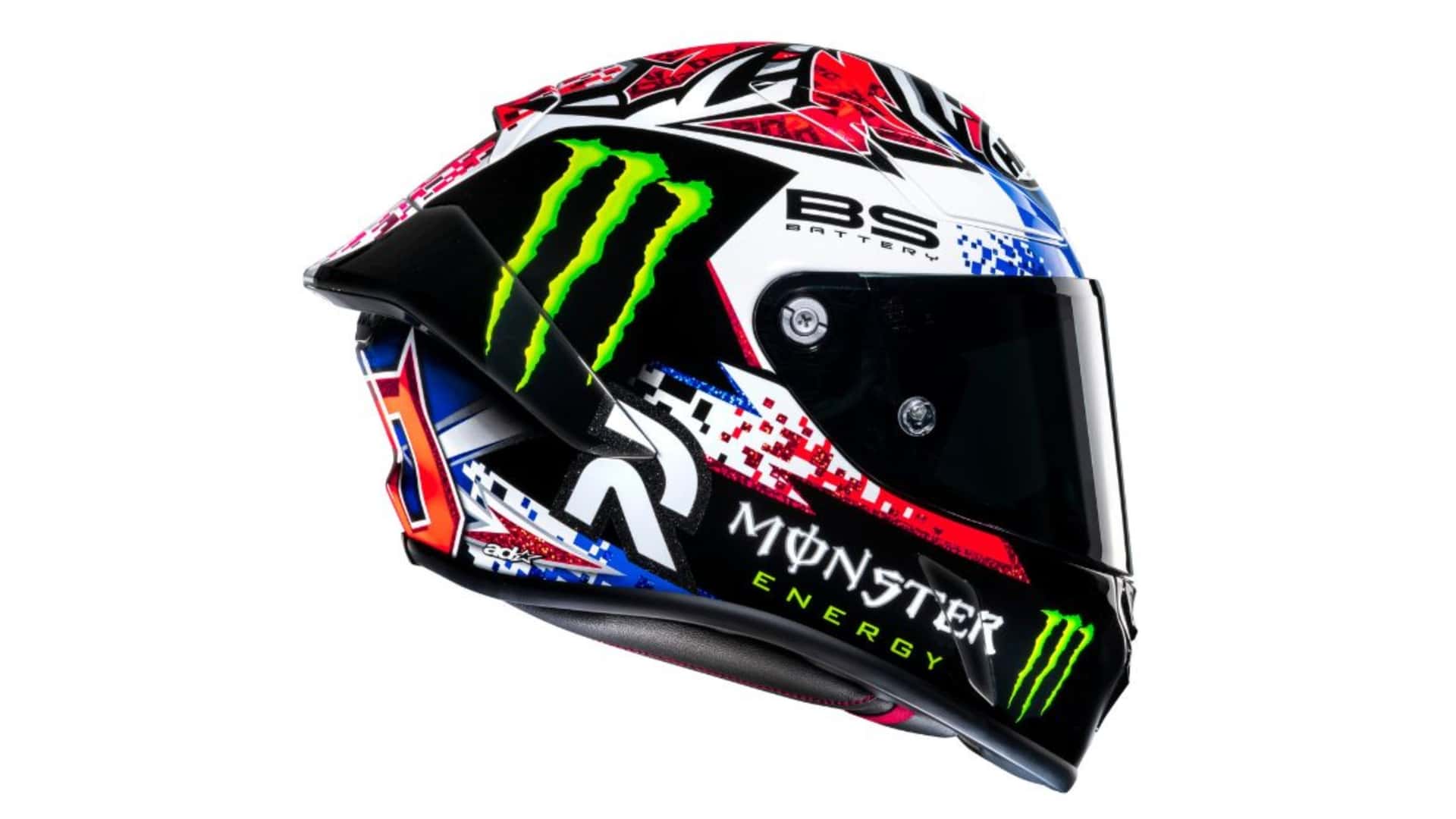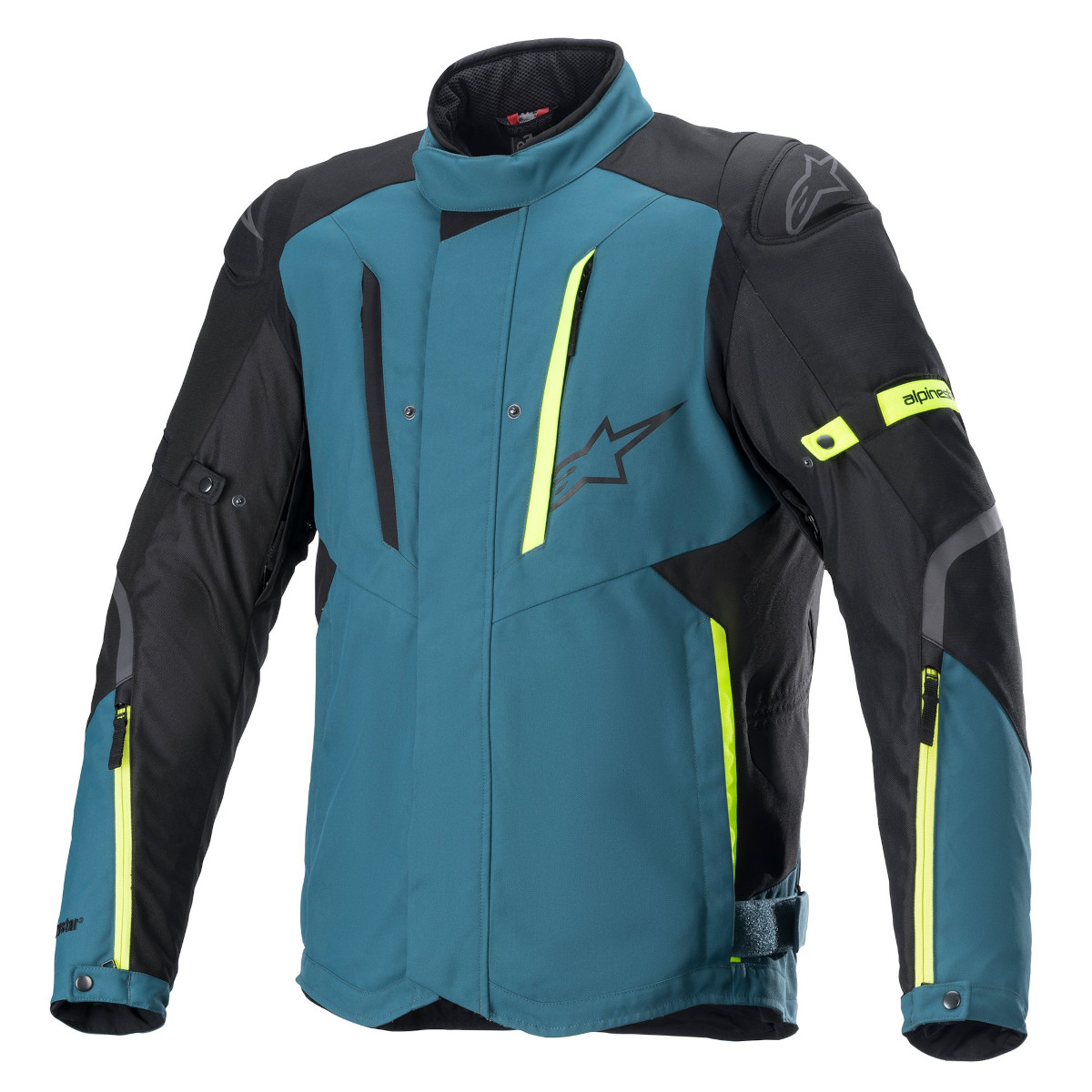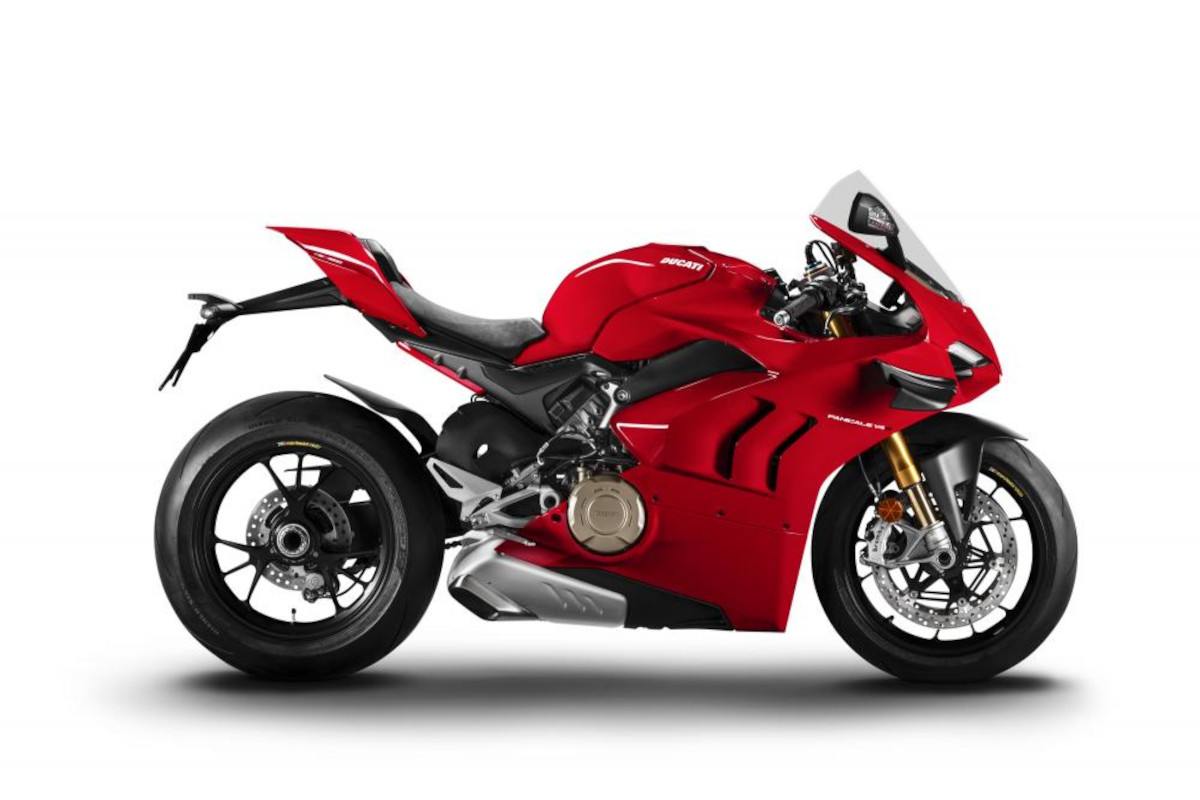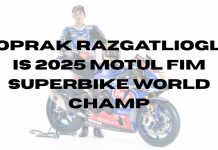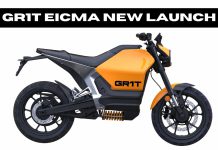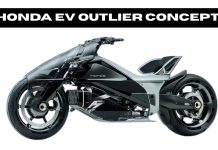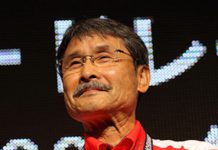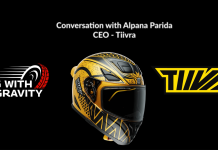Executive Summary
Stark Future, a pioneering electric motorcycle manufacturer based in Barcelona, has achieved a significant financial milestone by reporting its first profitable quarter in Q2 2025. The company announced robust Q2 2025 revenues of €47 million and an EBITDA of €4.5 million, representing a more than doubling of revenue compared to the previous year.1 This remarkable achievement was reached just six years after its founding and a mere two years after delivering its first vehicles to customers, setting an unprecedented benchmark for profitability speed within the electric vehicle (EV) sector.1
The company’s success is largely attributed to the overwhelming global demand for its high-performance off-road model, the Stark VARG, and the strategic introduction of its street-legal enduro variant, the Stark VARG EX.2 Stark Future’s rapid financial ascent is underpinned by its strong commitment to vertical integration, evidenced by its 20,000-square-meter factory dedicated to in-house battery and vehicle production, alongside the establishment of a cost-competitive global value chain.1 This combination of product excellence and operational efficiency positions Stark Future as a compelling model for future EV-only startups, demonstrating that high-performance electric vehicles can be both sustainable and financially viable.2
The consistent emphasis on Stark Future’s ability to achieve profitability faster than industry giants like Tesla (6 years versus Tesla’s 14-17 years for sustained profitability) serves a critical strategic communication purpose. This narrative directly addresses the prevalent skepticism among investors regarding the prolonged capital burn often associated with EV startups.14 By explicitly outperforming a market leader in a key financial metric, Stark Future not only validates its business model but also elevates its perceived standing from a niche electric motorcycle manufacturer to a significant, disruptive force in the broader EV landscape.1 This strategic messaging is designed to redefine market expectations for EV companies, shifting the focus from extended periods of loss to the potential for rapid financial health, thereby attracting top talent and fostering strategic partnerships.
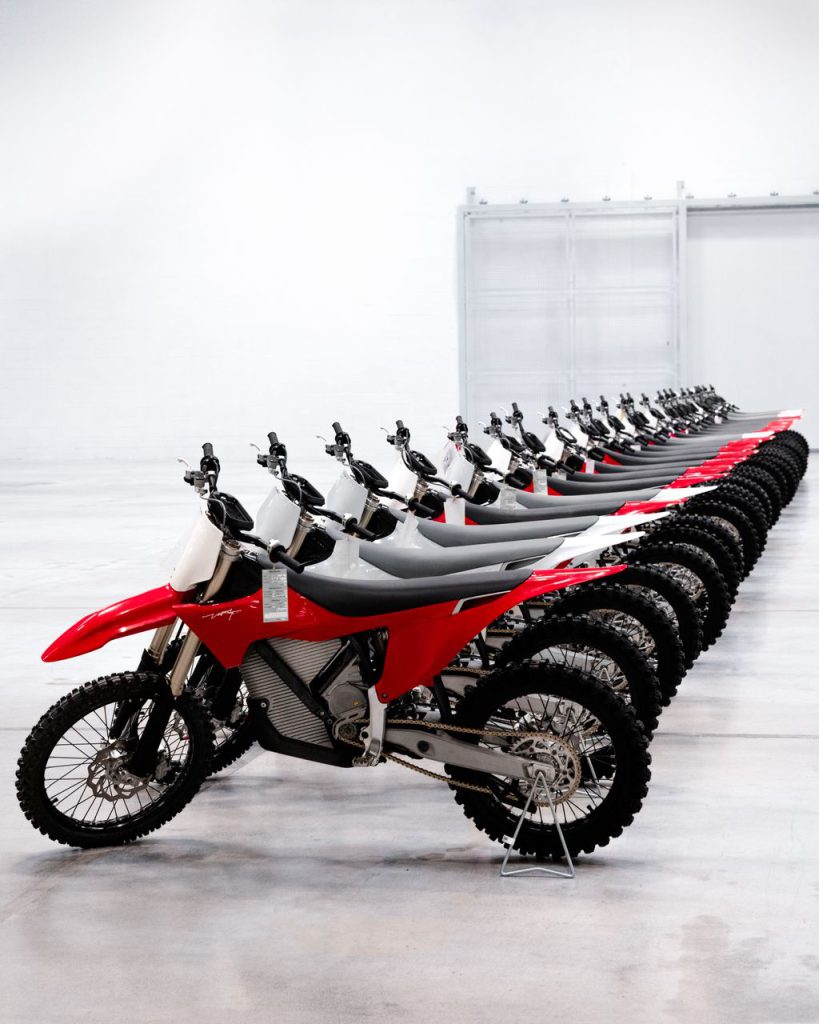
Stark Future’s Unprecedented Financial Performance
Q2 2025 Earnings and Revenue Highlights
Stark Future’s financial results for Q2 2025 underscore a period of remarkable growth and a pivotal shift to profitability. The company reported a substantial €47 million in revenue and a positive EBITDA of €4.5 million for the quarter.1 This revenue figure represents a significant increase, more than doubling the revenue achieved in the previous year, highlighting an impressive year-over-year growth trajectory.1 Prior to this, Stark Future had already demonstrated its financial strength by achieving a positive EBITDA of €2.8 million on a monthly revenue of €18.3 million in April 2025, which signaled a clear path towards sustained profitability.6
Analysis of Rapid Profitability: A New EV Industry Benchmark
The speed at which Stark Future achieved profitability is particularly noteworthy. The company reached this milestone just six years after its founding in 2019 and a mere two years following the initial delivery of its vehicles to customers, with commercial sales commencing in mid-2023.1 This rapid financial ascent is highlighted as “faster than any other electric vehicle manufacturer” globally, positioning Stark Future as a true disruptor in the electric mobility sector.1
Anton Wass, CEO of Stark Future, has publicly affirmed that this financial success is a direct confirmation of customer appreciation for the extensive efforts undertaken behind the scenes. These efforts include the strategic establishment of a cost-competitive global value chain and the construction of a cutting-edge, 20,000-square-meter factory dedicated to in-house battery and vehicle production.1 This integrated approach has been pivotal in enabling the company to achieve such swift financial viability.
Comparative Analysis: Stark Future vs. Tesla and Other EV Manufacturers
A comparative analysis of profitability timelines further underscores Stark Future’s exceptional performance. Tesla, a widely recognized leader in the EV industry, famously took 14 years, and nearly 17 years for sustained profitability, to turn a profit.1 In stark contrast, Stark Future achieved this critical financial turning point in just six years.1 Similarly, NIO, a prominent Chinese EV company that also relies on product sales for its revenue, required eight years to achieve positive EBITDA.8 This striking difference in timelines highlights Stark Future’s unique capability to translate initial market excitement into a “sustainable, scalable business model”.2 This stands in sharp contrast to many other EV startups that often struggle with financial stability and “burn cash faster than rubber”.2
The rapid profitability of Stark Future, especially when compared to broader-market EV players, highlights the effectiveness of focusing on a specific, high-value niche combined with strategic operational control. The core product driving this success is the Stark VARG, a high-performance electric dirt bike.2 This strategic approach suggests that concentrating on a defined market segment, where customers are willing to pay a premium for superior performance, can lead to faster financial viability by reducing the need for aggressive price competition and allowing for higher margins per unit. The VARG was meticulously engineered to “outperform traditional dirt bikes in every measurable aspect,” delivering “unrivaled performance and innovative design”.1 This strong product-market alignment within an enthusiast-driven segment has directly translated into “overwhelming global demand” 1 and rapid sales, which are fundamental to robust revenue generation.
Furthermore, the consistent emphasis on “in-house battery and vehicle production” within a 20,000-square-meter factory 1, coupled with a “cost-competitive global value chain” 1, plays a pivotal role. By controlling key components like batteries and managing manufacturing processes internally, Stark Future effectively mitigates common supply chain risks that plague many EV startups.23 This vertical integration optimizes costs, ensures stringent quality control, and accelerates production timelines, thereby reducing dependence on external suppliers who can introduce significant costs and delays. The focus on “efficient manufacturing processes” 11 and a “disciplined approach” 8 points to a lean operational philosophy.
This contrasts sharply with some EV startups that prioritize aggressive volume scaling at the expense of profitability, often leading to substantial cash burn.2 Stark Future’s model thus suggests that for EV startups, a focused, high-value niche, combined with robust vertical integration and operational efficiency, can provide a more viable and accelerated path to profitability than attempting to capture broad market segments or relying solely on external funding for extended periods. This approach could significantly influence investment strategies and business model development for future EV ventures.
Stark Future Financial Performance Snapshot (Q2 2025 vs. Previous Year/Quarter)
| Metric | April 2025 (Monthly) | Q2 2024 (Previous Year) | Q2 2025 (Current Period) | Year-over-Year Growth (Q2) |
| Revenue | €18.3 million | ~€23.5 million (est.) | €47 million | >100% |
| EBITDA | €2.8 million | N/A | €4.5 million | N/A |
Note: Q2 2024 revenue is an estimate derived from Q2 2025 revenue being “more than double” the previous year’s, assuming a doubling from ~€23.5M to €47M. Exact Q2 2024 EBITDA was not explicitly stated but was implied to be lower or negative prior to Q2 2025 profitability.
Profitability Timeline Comparison: Stark Future vs. Key EV Manufacturers
| Company | Years to Profitability (from founding) | Key Product/Segment | Notes |
| Stark Future | 6 years 1 | High-performance Electric Motorcycles (Motocross, Enduro) | Achieved first profitable quarter |
| Tesla | 14-17 years 5 | Electric Cars | Longer path to sustained profitability |
| NIO | 8 years 8 | Electric Cars | Achieved positive EBITDA |
Strategic Pillars Driving Stark Future’s Success
Product Innovation and Market Demand
The Impact of the Stark VARG (Motocross) and VARG EX (Enduro)
At the core of Stark Future’s rapid success is its innovative product line, starting with the Stark VARG. Launched in 2021, the VARG (Swedish for “strong wolf”) is touted as the “most powerful dirt bike in the world,” boasting an electric motor that develops 80 horsepower, which is 30% more than a comparable 450cc internal combustion engine (ICE) bike, and an enormous torque of 95.65 mkg (or 938 Nm).26 Its exceptional power-to-weight ratio of 9 hp per kilogram positions it as the fastest motocross bike on the market.26
The VARG’s advanced battery system, a proprietary development assembled in-house, features a 6 kWh (or 6.5 kWh in some specifications) energy-dense pack weighing less than 32 kg.26 This system incorporates a patented magnesium honeycomb case and a self-designed Battery Management System (BMS), enabling 1-5 hours of riding time with a rapid 1-2 hour recharge.26 A key differentiator is the VARG’s customizable settings, allowing riders to emulate the feel of a 125cc two-stroke to a 650cc four-stroke, with over 100 programmable modes accessible via a smartphone-style app.26 This adaptability caters to a wide spectrum of riders, from novices to seasoned professionals.27
Beyond performance, the VARG offers significant advantages in maintenance and environmental impact. Its electric nature eliminates the need for traditional upkeep such as oil changes, spark plugs, or valve adjustments, contributing to lower ownership costs and making it “the cheapest enduro bike you can own” in terms of maintenance.10 The emission-free and quiet operation further enhances its appeal, allowing for riding in diverse environments without noise pollution.26
Building on the VARG’s success, Stark Future successfully launched the VARG EX, a street-legal enduro variant, which has significantly contributed to the company’s recent profitability.2 The VARG EX features a 60hp motor, a 7.2kWh battery, and is fully homologated for road use in multiple regions, including Europe, North America, South America, Asia, and Australia.31 The global demand for both VARG models has been described as “overwhelming,” driving accelerated deliveries across these continents.1
Anticipated Contribution of the Upcoming Supermoto (SM) Model
Stark Future’s product roadmap includes the anticipated launch of the Stark VARG SM (Supermoto) in 2025.6 This model is expected to be road-legal and will build upon the proven platform of the VARG EX.34 The SM variant is projected to be lighter and lower than the EX, featuring 17-inch wheels, which will make it particularly well-suited for street riding and potentially more accessible to a broader demographic of riders, including those who are shorter or less experienced.36 The SM will offer the same powerful 60hp and 80hp powertrain configurations as the EX, ensuring high performance in a street-oriented package.34 This strategic expansion into street-legal categories represents a deliberate effort by Stark Future to enter broader segments of the motorcycle and powersports markets.3
The strategic product diversification from niche dominance to broader market appeal is a key element of Stark Future’s growth. The company achieved initial profitability almost entirely based on the VARG 6, a high-performance off-road bike. The subsequent introduction of the VARG EX (street-legal enduro) and the upcoming SM (supermoto) is not merely about adding new models; it represents a calculated move to leverage existing core technology to access larger, more accessible market segments. The VARG’s success established Stark Future’s engineering expertise in high-performance electric powertrains, lightweight chassis, and advanced battery systems.26 By building the EX and SM models upon this proven foundation 34, the company can reduce research and development costs and accelerate time-to-market compared to developing entirely new platforms. This approach significantly expands the addressable market. While the VARG caters to a niche of high-performance dirt bike enthusiasts, the street-legal EX and SM models aim to capture segments of the daily commuter, urban rider, and general leisure motorcycle markets.21 This expansion substantially increases potential sales volume and broadens revenue streams. Furthermore, diversifying into adjacent, larger segments mitigates the risk of niche market saturation or increased competition, ensuring continued growth and reducing reliance on a single product line. This phased product expansion—from a highly successful niche product to leveraging its technology for broader, more accessible segments—provides a practical model for other EV startups. It suggests focusing on a strong initial product-market fit to achieve profitability, then strategically expanding by adapting proven technology, rather than attempting to capture all segments simultaneously from the outset. Stark Future’s product roadmap thus demonstrates a sophisticated understanding of market entry and expansion, extending its technological leadership from a specialized segment to broader categories with the aim of reshaping the entire two-wheeled transportation industry. This “proof of concept” 1 is crucial for attracting further investment and talent, as it illustrates a clear path to sustained, large-scale growth.
Vertical Integration and Manufacturing Efficiency
In-house Battery and Vehicle Production
A cornerstone of Stark Future’s operational success and rapid profitability is its commitment to vertical integration, particularly in manufacturing. The company operates a “cutting-edge, 20,000-square-meter factory” dedicated to the in-house production of both batteries and complete vehicles.1 This integrated manufacturing approach is critical as it allows Stark Future to “maintain control over quality and costs” throughout the production process. This control is essential for ensuring that its electric motorcycles consistently deliver superior performance without compromising on sustainability objectives.11 Furthermore, this robust infrastructure supports the company’s ability to “scale operations globally while keeping expenses in check” and provides “more control over cost, quality, and timelines”.2 The battery system itself is a proprietary development, assembled in-house, featuring a self-designed Battery Management System (BMS) and housed within a patented magnesium honeycomb case.29 Stark Future also claims to have developed the “world’s smallest inverter for 50-100kW power ranges” 31, further showcasing its technological prowess and in-house capabilities.
Cost-Competitive Global Value Chain and Lean Principles
Anton Wass, CEO of Stark Future, has explicitly stated that the company has “rapidly established a cost-competitive global value chain”.1 This efficiency, coupled with their in-house production capabilities, enables them to develop “game-changing technology at competitive costs, all while still manufacturing in Europe”.8 While the term “lean principles” is not directly used in relation to Stark Future in the provided materials, the descriptions of their manufacturing strategy align closely with core lean manufacturing philosophies. These include an emphasis on “efficient manufacturing processes” 11, a focus on “optimizing operations” 13, and a meticulous attention to “cost, quality, and timelines”.2 Lean automation principles, for instance, advocate for identifying value-added steps, minimizing or eliminating the seven wastes (such as overproduction, waiting, and defects), and fostering continuous improvement.37 Stark Future’s ability to compete on price with traditional ICE powersports brands 13 further underscores the effectiveness of their cost-competitive approach.
The vertical integration adopted by Stark Future represents a strategic imperative for EV startups operating in a volatile supply chain environment. The repeated emphasis on in-house battery and vehicle production 1 is not merely an operational choice but a strategic one that directly addresses several common challenges faced by EV startups. EV companies frequently encounter “supply chain issues” 23, particularly concerning critical components like batteries and rare earth metals. By producing batteries in-house, Stark Future significantly reduces its reliance on external suppliers, thereby enhancing supply chain resilience and minimizing vulnerability to disruptions, price fluctuations, or quality control inconsistencies from third parties. This integrated approach also provides direct control over manufacturing costs and quality.11 This control is paramount in a capital-intensive industry where component costs, especially for batteries, are substantial. It facilitates tighter cost management and ensures that the promised premium performance is consistently delivered. Furthermore, developing proprietary battery systems and integrating them directly into vehicle production 29 allows for faster iteration and innovation. This agility enables Stark Future to quickly adapt and refine its products, maintaining a competitive edge in a rapidly evolving technological landscape. This also provides a distinct competitive advantage over legacy original equipment manufacturers (OEMs). While traditional powersports brands may rely on external suppliers or conventional manufacturing processes, Stark Future’s vertically integrated, lean approach allows it to “outpace tradition” 1 and potentially achieve cost efficiencies that larger, more complex organizations often struggle to realize. Stark Future’s success strongly suggests that for EV startups, particularly in performance-oriented segments, vertical integration of critical components like batteries is not just beneficial but may be a prerequisite for rapid profitability and sustainable growth. This strategy enables superior cost control, quality assurance, and accelerated innovation, directly addressing some of the most significant hurdles faced by new EV companies.
User-Focused Simplicity and Performance
Customizable Riding Modes and Advanced Technology
Stark Future’s product philosophy centers on a blend of high performance and user-focused simplicity, greatly enhancing the rider experience. The Stark VARG, for instance, offers over 100 customizable “modes” that can be programmed through a smartphone-style instrument panel and a dedicated app.26 These modes allow riders to instantly adjust parameters such as power curve, engine braking, traction control, and flywheel characteristics in a matter of seconds.26 This extensive customizability caters to riders of “all skill levels,” ranging from relative novices who can reduce power as needed during their learning curve, to highly experienced motocrossers who can fine-tune the bike to match their specific riding style and track conditions.27 The VARG EX further extends this capability, offering 100% customizability via the VARG app for power modes, trail recording, and built-in navigation, complemented by seamless over-the-air updates.31 A distinctive technological feature is the integration of a removable Android smartphone that serves as the bike’s touch screen dash display, enhancing connectivity and functionality.27
Sustainability Commitment and Environmental Impact
Beyond performance and user experience, Stark Future is deeply committed to sustainability. The company’s overarching mission is to “revolutionize the motorcycle industry by leading the shift toward sustainability and drastically reducing CO₂ and plastic pollution”.1 Their electric motorcycles are emission-free and operate quietly, contributing to improved air quality and reduced noise pollution, which also allows for riding in more diverse locations.26 Furthermore, the design prioritizes simple ownership, eliminating the need for filters, valves, or pistons, which translates to lower maintenance requirements and positions them as a cost-effective option, potentially “the cheapest enduro bike you can own” in terms of long-term upkeep.28 Stark Future’s dedication extends to a “full-circle commitment to sustainability,” encompassing everything from the selection of materials to production methods, thereby establishing the company as a leader in reducing CO2 emissions and plastic pollution within the industry.11 The company is also actively engaged in developing next-generation sustainable materials for its products.1
The symbiotic relationship between performance, user experience, and sustainability serves as a powerful market differentiator for Stark Future. The primary appeal of Stark Future’s motorcycles lies in their superior performance, characterized by high horsepower, immense torque, and the ability to outperform 450cc ICE bikes.26 This directly addresses the industry trend of electric motorcycles achieving “performance on par with gas-powered bikes” 32, which has historically been a significant barrier to EV adoption among enthusiasts. By genuinely outperforming ICE counterparts, Stark Future effectively removes the perceived compromise often associated with early electric vehicles.
The user-focused simplicity significantly enhances accessibility. Features such as over 100 customizable modes via a smartphone app 26, the absence of a clutch or gearbox 27, and reduced maintenance requirements 10 make the motorcycles easier to ride and own. This broadens their appeal beyond seasoned professionals to include relative novices, thereby expanding the potential customer base. This approach directly addresses “consumer acceptance” challenges by simplifying the user experience 23, making electric motorcycles more approachable for a wider audience.
Furthermore, Stark Future’s commitment to sustainability is not merely a compliance point but a core value proposition. Its mission to reduce CO2 and plastic pollution 1 aligns with increasing “environmental concerns and stringent emission regulations”.39 By integrating sustainability into “cutting-edge design and engineering” and “material choices” 11, it becomes an intrinsic part of the premium offering, attracting “eco-conscious and performance-driven consumers”.43 Anton Wass’s statement, “We are here to inspire the motorcycle industry to sustainability and we’re inspiring customers by making a better product” 28, encapsulates this holistic approach. It indicates that performance, ease of use, and environmental responsibility are not trade-offs but synergistic elements that define a superior product, fostering customer loyalty and driving sales.11 This integrated approach creates a powerful market differentiator that resonates with a broad spectrum of consumers and positions the brand as a leader in reshaping the industry’s future.
Key Specifications Comparison: Stark VARG, VARG EX, and VARG SM (Anticipated)
| Feature | Stark VARG (Motocross) | Stark VARG EX (Enduro) | Stark VARG SM (Supermoto – Anticipated) |
| Type | Off-road Motocross | Off-road Enduro (Street-legal) | Street Supermoto (Road-legal) |
| Horsepower | 80 hp 26 | 60 hp (Standard), 80 hp (Alpha) 31 | 60 hp (Standard), 80 hp (Alpha) 34 |
| Battery Capacity | 6 kWh / 6.5 kWh 26 | 7.2 kWh 31 | 7.2 kWh 36 |
| Weight (Dry/Claimed) | 110 kg (243 lb) 26 | 120 kg (264 lb) 31 | Lighter than EX, likely <120 kg 36 |
| Range | Up to 5 hours riding 26 | Up to 6 hours trail riding 31 | Less than EX on track, variable on street 36 |
| Charge Time | 1-2 hours 26 | 1-2 hours (240V) 31 | Similar to EX, 1-2 hours (240V) 34 |
| Road Legal | No | Yes (Homologated for Europe, NA, SA, Asia, Aus) 31 | Yes (Confirmed for US) 34 |
| Key Features | 100+ customizable modes via app, smartphone dash, lightest chassis, air-cooled battery 26 | Improved frame flex, integrated inverter, water-cooled motor, 24/7 tech support 31 | 17-inch wheels, less suspension travel, ideal for street riding 34 |
Stark Future’s Position in the Evolving Electric Motorcycle Market
Global Electric Motorcycle Market Overview
Market Size and Growth Projections
The global electric motorcycle market is poised for substantial growth in the coming years, although specific market size and Compound Annual Growth Rate (CAGR) estimates vary across different market research sources. These variations likely stem from differences in market scope, particularly whether electric scooters and mopeds are included in the definition, and distinct regional focuses. Some projections indicate an expansion from USD 11.26 billion in 2024 to USD 19.45 billion by 2034, reflecting a CAGR of 5.62%.39 Other analyses offer a more aggressive growth outlook, forecasting an increase from USD 30.11 billion in 2022 to USD 121.07 billion by 2030, with a robust CAGR of 19.9%.42 When electric scooters are included, the total market size is estimated at USD 39.83 billion in 2025, with a projected growth to USD 61.73 billion by 2034 at a CAGR of 4.99%.44 Notably, the electric motorcycle
sub-segment (excluding scooters) is specifically projected to experience a remarkable 18.43% CAGR through 2030.45
Regional Dynamics
Regionally, Asia Pacific consistently dominates the electric two-wheeler market, holding over 80-90% of the market share between 2022 and 2024.39 This dominance is driven by factors such as improved economic conditions, rapid urbanization, increasing affordability of electric models, and growing consumer awareness regarding clean energy mobility.42 Europe is also anticipated to experience significant growth 39, while North America is projected to expand at the fastest CAGR in certain market forecasts.44
Key Trends
Several key trends are shaping the electric motorcycle market. Battery advancements are a primary driver, with significant improvements in lithium-ion technology leading to increased energy density, exemplified by Zero Motorcycles’ models achieving a 420-mile range and CATL’s innovations in weight reduction.32 Charging times have also improved, with many electric motorcycles reaching 80% charge in under an hour, and modular/swappable battery systems gaining traction.32 The development of solid-state batteries and graphene-enhanced cells promises further revolutions in energy density.48
Charging infrastructure is expanding, with DC fast-charging networks improving, although they are not yet as widespread as traditional gas stations. Governments worldwide are actively investing in strengthening EV charging infrastructure.32
Government incentives play a crucial role in driving adoption. This includes active advocacy from governments offering tax rebates (up to 30% in 15 countries), purchase subsidies (such as India’s FAME-II scheme and Indonesia’s subsidies), and stringent emissions regulations, like the European Union’s 2035 ban on combustion engines for motorcycles.32
Finally, urban mobility and last-mile delivery are significant growth segments. Rapid urbanization and the proliferation of ride-hailing and delivery companies are fueling demand for eco-friendly, compact electric two-wheelers that can efficiently navigate congested urban environments.39
The notable discrepancy in market projections for the electric motorcycle market, with varying market sizes and CAGRs, reflects a crucial nuance in market segmentation and geographic focus. This is not necessarily a contradiction but rather highlights different methodologies and scopes employed by market analysts. The primary reason for the large variance is often whether the market definition includes electric scooters and mopeds alongside electric motorcycles. Data indicates that scooters accounted for a substantial 65.23% of the electric scooter and motorcycle market revenue share in 2024.45 Therefore, reports that include scooters will inherently present a much larger overall market size. Additionally, the geographic scope and regional growth rates contribute to these differences. Asia Pacific’s overwhelming dominance, accounting for 80-90% of the market share 42, means that reports heavily weighted by this region’s performance will yield different overall figures. It is important to note that the “motorcycle sub-segment” is projected to grow at a higher 18.43% CAGR 45, indicating that the
motorcycle-only market, in which Stark Future primarily operates, is experiencing robust, high growth, even if the broader “two-wheeler” market (including scooters) has a lower average CAGR. This understanding is critical for industry analysis. While the overall trend for electric two-wheelers is positive, the specific market for performance-oriented motorcycles, which Stark Future targets, is indeed experiencing higher growth rates than the broader “scooter and motorcycle” market. This validates Stark Future’s strategic focus on premium, performance motorcycles and suggests a significant growth runway within that specific segment, which in turn informs where investment and strategic focus should be directed.
Competitive Landscape
Analysis of Established Legacy Brands
The premium electric motorcycle market features a mix of established legacy brands and emerging startups. Major players include BMW Motorrad, Ducati Motor Holding S.p.A, Energica Motor Company, Harley-Davidson (LiveWire), KTM AG, Verge Motorcycles, and Zero Motorcycles.43 In 2024, Ducati and Harley-Davidson (through its LiveWire sub-brand) collectively commanded a substantial market share of over 37% in the premium electric motorcycle industry.43 These companies leverage their strong brand equity, innovative product offerings, and extensive global distribution networks.
Despite its brand recognition, LiveWire has faced significant challenges. The brand sold only 275 units in the first half of 2024, and its Q1 2025 unit sales plummeted by 72% to a mere 33 motorcycles, even with the introduction of more affordable models.24 LiveWire’s financial struggles also include a 23% revenue decline in Q1 2025 and ongoing cash burn, although cost-cutting measures are showing some improvement in operating losses.24
In contrast, Zero Motorcycles has established itself as the largest electric motorcycle manufacturer in North America as of 2025.49 The company is recognized for its high-performance, lightweight designs and a diverse product portfolio that spans street, off-road, touring, and racing segments. Zero Motorcycles is also strategically expanding its offerings to include lower-cost models to appeal to a wider customer base.49
Comparison with Other Emerging EV Startups and their Challenges
EV startups, generally, face a range of significant hurdles, including high initial capital investment, technological complexity, supply chain issues, navigating regulatory landscapes, achieving broad consumer acceptance (often hindered by range anxiety and charging infrastructure concerns), and intense competition from well-resourced established players.23
The experiences of other emerging EV motorcycle startups vividly illustrate these challenges:
- Energica: Once the exclusive supplier for the FIM MotoE World Cup, Energica entered judicial liquidation in October 2024.14 Its struggles were attributed to funding shortages, sluggish market demand, and a failure to secure new investors.14 A notable contributing factor was a perceived “lack of a dealership network and significantly smaller marketing presence”.15 Despite these difficulties, Energica reported an annual revenue of $15 million as of July 2025.54
- Damon Motorcycles: This Canadian startup has grappled with severe production delays, capital chain issues, and a plummeting stock price, leading it to the verge of delisting by May 2025.14 Its business model, which relies on an asset-light approach and licensing proprietary technology, remains unproven. Internal “chaos” and unannounced layoffs have also been reported.17
- Cake: The Swedish electric motorcycle firm entered liquidation after failing to secure sufficient follow-on funding.19 Its downfall was linked to launching too many undifferentiated models too quickly, an over-ambitious global market strategy, insufficient sales momentum, and “asset overreach” (premature investment in component production and multiple factories).19 The company also faced quality issues, including recalls for steering column defects and a battery fire.20
- Ultraviolette Automotive: An Indian premium electric motorcycle manufacturer, Ultraviolette is strategically targeting the European market, viewing 2025 as a “pilot year” for establishing brand presence and distributor networks. The company aims for international sales to contribute up to 35% of its overall revenue by 2028.56
Stark Future’s profitability, in contrast to the struggles of many other EV startups, underscores the inherent fragility of the EV startup ecosystem and the paramount importance of execution. While Stark Future is thriving, the financial distress or liquidation of prominent ventures like Energica, Damon, and Cake 14 clearly illustrates that the EV market, despite its immense promise, is unforgiving for companies that fail to adhere to core business fundamentals.
A key differentiator lies in capital management and the avoidance of over-ambition. Companies like Cake, which launched too many models and attempted to establish too many factories and global markets too quickly 19, along with Damon, which experienced production delays and an unproven licensing model 17, exemplify the dangers of over-extending resources without achieving sufficient sales momentum or securing adequate, sustained funding. Energica’s challenges also point to funding shortages and sluggish market demand.14
Furthermore, the importance of product-market fit and clear differentiation cannot be overstated. Cake’s failure to adequately differentiate its models 19 and Energica’s “lackluster response toward electric bikes” 16 suggest that simply being an electric vehicle is insufficient for success. Stark Future’s triumph with the VARG, a “disruptive” high-performance product that “blew away” expectations 2, demonstrates the critical need for a compelling product that genuinely outperforms ICE alternatives and resonates with its target audience.
Distribution and marketing capabilities also play a significant role. Energica’s struggles were partly attributed to a “lack of a dealership network and significantly smaller marketing presence”.15 In stark contrast, Stark Future has rapidly expanded its global retail footprint to 400 locations across more than 50 countries 8, ensuring broader accessibility and market penetration.
Finally, Stark Future’s emphasis on a “cost-competitive global value chain” and “efficient manufacturing processes” 1 directly contrasts with the “chaos” and “cash burn” observed in other struggling startups.17 This highlights that financial discipline and operational efficiency are paramount, even more so than for traditional startups given the high capital requirements of EV manufacturing. Stark Future thus serves as a compelling case study for successfully navigating the treacherous EV startup landscape. Its rapid profitability is not an anomaly but a direct consequence of strategic choices that address the core challenges that have led other promising ventures to falter: a strong, differentiated product, disciplined financial management, effective vertical integration, and a clear market expansion strategy. This provides invaluable lessons for new entrants into the electric vehicle market.
Global Electric Motorcycle Market Projections (2024-2034)
| Source | Market Scope | Market Size (Base Year) | Projected Market Size (End Year) | CAGR (%) | Leading Region |
| Towards Automotive 39 | Electric Motorcycles Only | USD 11.26 Billion (2024) | USD 19.45 Billion (2034) | 5.62% (2025-2034) | Asia Pacific |
| Grand View Research 42 | Electric Motorcycles Only | USD 30.11 Billion (2022) | USD 121.07 Billion (2030) | 19.9% (2023-2030) | Asia Pacific |
| Precedence Research 44 | Electric Motorcycles & Scooters | USD 37.93 Billion (2024) | USD 61.73 Billion (2034) | 4.99% (2025-2034) | Asia Pacific |
| Mordor Intelligence (Motorcycle sub-segment) 45 | Electric Motorcycles Only | N/A | N/A | 18.43% (through 2030) | Asia Pacific |
| Market.us 47 | Electric Motorcycles & Scooters | USD 42.5 Billion (2024) | USD 234.0 Billion (2034) | 18.6% (2025-2034) | Asia-Pacific |
| ResearchAndMarkets.com (Motorcycle segment) 57 | Electric Motorcycles Only | N/A | USD 31.3 Billion (2030) | 4.6% (2024-2030) | U.S. (2024), China (2030) |
| Business Research Insights 41 | Electric Motorcycles Only | USD 0.58 Billion (2024) | USD 1.13 Billion (2033) | 9.8% (2025-2033) | N/A |
Competitive Landscape: Select EV Motorcycle Manufacturers (Market Position, Key Products, Strategic Focus)
| Company | Market Position/Status | Key Electric Products | Strategic Focus/Key Strengths | Recent Performance/Challenges |
| Stark Future | Leading, fastest-scaling, profitable EV motorcycle startup 1 | VARG (Motocross), VARG EX (Enduro), VARG SM (Supermoto) 6 | High-performance, vertical integration, cost-competitive global value chain, user-focused tech, sustainability 1 | First profitable quarter Q2 2025, €47M revenue, €4.5M EBITDA 1 |
| Harley-Davidson (LiveWire) | Legacy player, premium segment 43 | LiveWire One, S2 Del Mar, S2 Mulholland 49 | Brand equity, high-performance legacy, R&D investment 43 | Q1 2025 revenue down 23%, unit sales down 72% (33 units); significant cash burn, cost-cutting efforts 24 |
| Zero Motorcycles | Largest in North America, pioneer in high-performance EV 49 | SR/S, SR, FXE, DSR/X 49 | Lightweight design, high-performance powertrain, diverse portfolio, global expansion 49 | Expanding into lower-cost models (XE, XB) 52 |
| Ducati Motor | Legacy player, high-end, premium segment 43 | V21L (MotoE prototype) 49 | Italian design, advanced technology, racing heritage, Volkswagen Group backing 43 | Exclusive MotoE supplier since 2023 49 |
| Energica Motor Company | High-performance EV startup (struggling) 43 | Ego+, Eva Ribelle, Experia 49 | Former MotoE supplier, technological accumulation 49 | Entered judicial liquidation Oct 2024 due to funding shortages, sluggish demand; lack of dealer network 14 |
| Damon Motorcycles | EV technology startup (struggling) 49 | Hypersport Premier, HS, SX/SE, Hyperfighter 49 | Intelligent safety systems (CoPilot™), adaptable ergonomics (Shift™) 49 | Production delays, capital chain issues, plummeting stock, near delisting; asset-light model unproven 14 |
| Cake | EV startup (liquidated) 48 | Kalk, Bukk, Makka, Aik (various models) 19 | Niche off-road models, design-focused 19 | Entered liquidation due to funding failure, too many undifferentiated models, over-ambitious global expansion, quality issues 19 |
| Ultraviolette Automotive | Emerging Indian premium EV startup 58 | F77, Tesseract 48 | Hyperbike aesthetics, high speeds 48 | Pilot year for European entry (2025), aiming for 35% revenue from exports by 2028 56 |
Challenges Overcome and Future Opportunities
Addressing Common EV Startup Hurdles
Stark Future’s journey to profitability demonstrates a strategic approach to overcoming common challenges faced by electric vehicle (EV) startups.
High Initial Capital Investment: A significant hurdle for any EV startup is the substantial capital required for research, development, and manufacturing.23 Stark Future has successfully navigated this by securing considerable investments, including a €50 million equity stake from Eicher Motors Ltd., the parent company of Royal Enfield, representing a 10.35% equity share.22 This was complemented by credit facilities of €20 million from Santander and €25 million from Big Bets.22 Such robust funding indicates strong investor confidence in Stark Future’s business model and technological capabilities.
Technological Complexity: Developing advanced EV technology is intricate and demanding.23 Stark Future has addressed this by developing proprietary technologies, including its high-performance motor (80hp, 9hp/kg, weighing only 9kg, water-cooled with an integrated inverter) and its innovative battery system (6-7.2kWh capacity, featuring a patent-pending magnesium honeycomb case and a proprietary “Flying V” concept with an in-house Battery Management System).26 The company’s development of the “world’s smallest inverter for 50-100kW power ranges” further highlights its advanced engineering capabilities.31
Supply Chain Issues: Establishing a dependable and cost-effective supply chain is a frequent challenge for EV startups.23 Stark Future’s strategy of maintaining a “cost-competitive global value chain” and conducting “in-house battery and vehicle production” within its 20,000-square-meter factory provides greater control over costs, quality, and timelines.1 This vertical integration significantly mitigates typical supply chain disruptions and enhances resilience. Furthermore, their sourcing strategy emphasizes ethical and responsible practices, aligning with broader sustainability goals.60
Consumer Acceptance: Concerns about range anxiety and performance parity with ICE vehicles can hinder consumer adoption.23 Stark Future directly addresses these by offering models that genuinely outperform ICE counterparts in terms of power and torque, coupled with comparable range and fast charging times.26 The highly customizable riding modes and low maintenance requirements further enhance the appeal and ease of ownership, broadening the customer base.26
Competition from Established Players: Competing with well-established automotive and powersports manufacturers is a formidable challenge.23 Stark Future has adopted a strategy of directly challenging “long-established global brands with superior electric alternatives”.1 Its rapid profitability and demonstrated technological breakthroughs provide a strong competitive edge against incumbents.
The strategic partnerships and funding secured by Stark Future serve as a powerful catalyst for overcoming capital hurdles and accelerating industrialization. High initial capital investment is a major barrier for EV startups.23 Stark Future’s success in securing a significant €50 million investment from Eicher Motors (Royal Enfield’s parent company) 22, in addition to other credit facilities, is more than just a financial injection; it represents a strategic alliance. This investment from an established automotive player provides substantial validation for Stark Future’s technology and business model, effectively de-risking the venture for other potential funders and reducing the perception of a “speculative play” often associated with startups. The partnership with Eicher Motors extends beyond mere capital, encompassing “collaborative research and development in electric motorcycles, technology sharing, technical licensing and manufacturing”.59 This means Stark Future gains invaluable access to Royal Enfield’s industrialization expertise, which is crucial for scaling production from a startup phase to mass market. In return, Royal Enfield benefits from Stark’s cutting-edge EV technology. This mutually beneficial arrangement accelerates growth for both entities. Unlike purely financial investments, strategic partnerships bring operational and market advantages. Eicher Motors’ support in the “industrialisation process” 59 directly addresses the challenges of scaling production. The combination of equity investment and credit facilities 22 provides a diversified funding base, reducing reliance on a single source and improving overall financial stability, which is often a critical weakness for EV startups.14 Stark Future’s approach to funding, characterized by securing strategic partnerships that contribute more than just capital, offers a powerful model for other EV startups. It demonstrates that aligning with established industry players can provide the necessary capital, expertise, and validation to overcome significant barriers to entry and accelerate the path to profitability and large-scale industrialization.
Product Roadmap and Market Expansion Strategy
Expansion into Broader Motorcycle and Powersports Segments
Stark Future is actively leveraging its current momentum to strategically expand into broader segments of motorcycles and powersports. The company’s stated aim is to directly challenge “long-established global brands with superior electric alternatives”.1 This ambitious product roadmap includes plans for electric street bikes and sport bikes, signifying a move beyond its current focus on off-road and enduro models.10 The upcoming road-legal VARG EX and SM models, both slated for 2025, represent key initial steps in this strategic expansion.6
Global Retail Footprint and Distribution Network
Driven by overwhelming global demand, Stark Future is accelerating deliveries across major continents, including Europe, North America, South America, Asia, and Australia.1 The company has significantly expanded its global retail footprint, establishing “400 retail locations in more than 50 countries worldwide”.8 This extensive distribution network, complemented by robust online sales options, simplifies the purchasing process for customers across the globe.22
Stark Future as a Blueprint for Future EV-Only Startups
Lessons Learned from Stark’s Model
Stark Future’s rapid ascent and profitability offer several critical lessons that could serve as a “blueprint” for future EV-only startups:
- Vertical Integration: The in-house production of batteries and vehicles is crucial for achieving superior cost control, ensuring quality assurance, and building resilience against supply chain disruptions.2 This minimizes reliance on external suppliers for critical components, a common vulnerability for new EV companies.
- Niche Focus to Build Momentum: Beginning with a highly differentiated, high-performance product in a specific niche, such as motocross, allowed Stark Future to achieve rapid market validation and generate substantial revenue before attempting broader market expansion.2 This focused approach helps conserve resources and build a strong foundation.
- Rapid Scaling and Operational Efficiency: The establishment of a “cost-competitive global value chain” and the implementation of “efficient manufacturing processes” 11 are paramount for converting market demand into profitable sales at scale. This emphasizes disciplined operations over unchecked growth.
- Strong Product-Market Fit: Creating a product that genuinely outperforms traditional ICE alternatives and offers unique, user-focused features—such as extensive customizability and low maintenance—is fundamental to attracting and retaining customers.10
- Strategic Funding: Securing investments that provide not only capital but also industrialization expertise, such as the partnership with Eicher Motors, can be transformative for scaling production and navigating market complexities.59
Applicability and Limitations for Other Startups
The blueprint offered by Stark Future’s success is highly applicable for startups targeting premium, performance-oriented segments where customers demonstrate a willingness to pay for superior technology and an enhanced experience. The phased expansion strategy, moving from a successful niche to broader, adjacent markets, is also a transferable model for sustainable growth.
However, replicating Stark Future’s achievements comes with significant limitations. It necessitates substantial initial capital for vertical integration and extensive research and development. Furthermore, access to a strong engineering team capable of developing proprietary technologies and a deep understanding of complex manufacturing processes and global supply chains are crucial. The “overwhelming global demand” for the VARG 1 represents a unique market response that may be challenging for every new product or startup to replicate. Therefore, while the model provides valuable insights, its full implementation requires considerable resources and strategic acumen.
Stark Future’s Strategic Advantages & Challenges Addressed
| Common EV Startup Challenge | Stark Future’s Strategic Advantage/Approach | How it Addresses the Challenge |
| High Initial Capital Investment 23 | Strategic investments from Eicher Motors (€50M for 10.35% equity), Santander (€20M), and Big Bets (€25M) 22 | Provides necessary capital and validates business model, reducing funding risk and accelerating development. |
| Technological Complexity 23 | Proprietary motor and battery technology (in-house BMS, patented magnesium honeycomb case, smallest inverter) 26 | Ensures cutting-edge performance, control over innovation, and intellectual property differentiation. |
| Supply Chain Issues 23 | In-house battery and vehicle production (20,000 sqm factory), cost-competitive global value chain 1 | Mitigates external supply chain disruptions, optimizes costs, and ensures quality and timely production. |
| Consumer Acceptance (Range Anxiety, Performance) 23 | Products outperform ICE counterparts (80hp, high torque), comparable range, fast charging, 100+ customizable modes, low maintenance 26 | Builds confidence by eliminating performance compromises, offering user flexibility, and reducing ownership burden. |
| Competition from Established Players 23 | Direct challenge to legacy brands with “superior electric alternatives,” rapid profitability 1 | Establishes market leadership and disrupts traditional industry norms through demonstrated financial and technological superiority. |
Conclusion and Outlook
Stark Future’s achievement of profitability in Q2 2025 marks a pivotal moment, not only for the company itself but for the broader electric vehicle industry. This rapid financial success demonstrates that EV startups, particularly those focused on high performance and innovation, can achieve financial viability in a remarkably short timeframe.1 The company’s success is a testament to a meticulously executed strategy that combines product excellence, exemplified by the VARG and VARG EX, with robust vertical integration, efficient manufacturing processes, and a keen understanding of market demand.1 By outpacing legacy brands and other EV startups in its path to profitability, Stark Future has firmly positioned itself as a frontrunner in the electrification of powersports, fundamentally reshaping industry expectations.1
The long-term outlook for Stark Future appears robust. The company is poised to capitalize on its current momentum by strategically expanding into broader motorcycle categories, including electric street and sport bikes, leveraging its proven technology and manufacturing capabilities.3 Simultaneously, the electric motorcycle market as a whole is projected for significant growth, driven by increasing environmental mandates, continuous advancements in battery technology, and growing consumer acceptance, particularly within urban mobility and last-mile delivery segments.32 Stark Future’s disciplined approach to achieving profitability, coupled with its ambitious product roadmap and expanding global presence, suggests a strong trajectory for sustained success in this evolving market.
Stark Future’s journey provides a compelling “blueprint” for future EV-only startups. It highlights that a focused approach on a high-performance, differentiated product, combined with strategic vertical integration and rigorous financial discipline, can lead to rapid and sustainable profitability.2 This model challenges the long-held notion that EV companies must endure prolonged periods of losses, signaling a maturation of the electric vehicle market where innovation and financial health can indeed go hand-in-hand.1 Ultimately, the company’s unwavering commitment to sustainability, integrated with its market-leading performance, positions it as a key driving force in accelerating the global transition towards eco-friendly two-wheeled transportation.
Sources
- Stark Future Smashes EV Profitability Records in Ǫ2 to Challenge Legacy Powersports, accessed on July 17, 2025, https://www.morningstar.com/news/globe-newswire/1001117930/stark-future-smashes-ev-profitability-records-in-2-to-challenge-legacy-powersports
- Stark Future Posts Profit in Record Time – iMotorbike News, accessed on July 17, 2025, https://news.imotorbike.com/en/2025/07/stark-future-varg-dirt-bike-profit/
- Stark Future Reports First Profitable Quarter | Motorcycle.com, accessed on July 17, 2025, https://www.motorcycle.com/bikes/news/stark-future-reports-first-profitable-quarter-44644933
- Stark Future Smashes EV Profitability Records in Q2 to Challenge Legacy Powersports, accessed on July 17, 2025, https://www.prnewswire.com/news-releases/stark-future-smashes-ev-profitability-records-in-q2-to-challenge-legacy-powersports-302504978.html
- “Tesla took 14 years to turn a profit” – Stark Future makes €47 million revenue – Enduro21, accessed on July 17, 2025, https://enduro21.com/en/news/industry-news/tesla-took-14-years-to-turn-a-profit-stark-future-makes-47-million-revenue
- Stark Future Announces Q2 Financial Records, Absolutely Destroying Tesla, accessed on July 17, 2025, https://www.rideapart.com/news/765976/stark-future-2025-half-yearly-profitability-records/
- This electric motorcycle company just did what no one else could – Electrek, accessed on July 17, 2025, https://electrek.co/2025/07/15/this-electric-motorcycle-company-just-did-what-no-one-else-could/
- Stark Future achieves new milestones with €18.3M in revenue and €2.8M positive EBITDA in record-breaking April 2025 | thepack.news, accessed on July 17, 2025, https://thepack.news/stark-future-achieves-new-milestones-with-e18-3m-in-revenue-and-e2-8m-positive-ebitda-in-record-breaking-april-2025/
- Stark Future Smashes EV Profitability Records in Q2 to Challenge Legacy Powersports, accessed on July 17, 2025, https://www.cyclenews.com/2025/07/article/stark-future-smashes-ev-profitability-records-in-q2-to-challenge-legacy-powersports/
- Stark VARG: April 2025 Sales Surge Past $20M, Redefining the Electric Dirt Bike Landscape, accessed on July 17, 2025, https://www.ktmworld.com/blog/blog/2025/05/29/stark-varg-april-2025-sales-surge-past-20m-redefining-the-electric-dirt-bike-landscape
- Stark Future Leads EV Motorcycle Revolution – The EV Report, accessed on July 17, 2025, https://theevreport.com/stark-future-leads-ev-motorcycle-revolution
- Stark Future breaks EV profitability records in Q2, challenging established powersports companies | thepack.news, accessed on July 17, 2025, https://thepack.news/stark-future-breaks-ev-profitability-records-in-q2-challenging-established-powersports-companies/
- Stark Future surges ahead in global powersports market, accessed on July 17, 2025, https://powersportsbusiness.com/news/motorcycle/2025/07/16/stark-future-surges-ahead-in-global-powersports-market/
- EV Motorcycle Company Energica Won’t Die, Fingers Crossed – RideApart.com, accessed on July 17, 2025, https://www.rideapart.com/features/765686/energica-saved-singaporean-investors/
- Electric Motorcycle Company Energica is Dead, Will Liquidate the Company, accessed on July 17, 2025, https://www.rideapart.com/news/737489/energica-declares-bankruptcy-liquidates-assets/
- EV Motorcycle Maker Energica Sure Seems Like It’s Going Bankrupt – RideApart.com, accessed on July 17, 2025, https://www.rideapart.com/news/737349/energica-possibly-bankrupt-workers-strike-italy/
- You’re Probably Never Getting The 200 Horsepower, 200 Mile Damon Electric Motorcycle, accessed on July 17, 2025, https://www.rideapart.com/features/750361/damon-motorcycles-electric-ev-derek-dorresteyn-leaves/
- Damon Inc.’s Delisting Crossroads: A Contrarian’s High-Stakes Gamble? – AInvest, accessed on July 17, 2025, https://www.ainvest.com/news/damon-delisting-crossroads-contrarian-high-stakes-gamble-2505/
- Cake Motorcycles Enters Liquidation – Navigator Consulting, accessed on July 17, 2025, https://www.navigator-consulting.com/post/cake-motorcycles-enters-liquidation
- Swedish Electric Motorcycle Firm CAKE Files For Bankruptcy – carandbike, accessed on July 17, 2025, https://www.carandbike.com/news/swedish-electric-motorcycle-firm-cake-files-for-bankruptcy-3211603
- How one of the only profitable electric motorcycle companies got there with street legal e-dirtbikes – Electrek, accessed on July 17, 2025, https://electrek.co/2025/05/14/how-one-of-the-only-profitable-electric-motorcycle-companies-got-there-with-street-legal-e-dirtbikes/
- Stark Future is on track to become one of the fastest-growing Spanish startups in history, accessed on July 17, 2025, https://thepack.news/stark-future-is-on-track-to-become-one-of-the-fastest-growing-spanish-startups-in-history/
- EV Startup Challenges – DIYguru, accessed on July 17, 2025, https://diyguru.org/insights/article/ev-startup-challenges/
- LiveWire Group’s Q1 2025 Results: Cost Cuts Offset Revenue Slump Amid Strategic Shifts, accessed on July 17, 2025, https://www.ainvest.com/news/livewire-group-q1-2025-results-cost-cuts-offset-revenue-slump-strategic-shifts-2505/
- LiveWire Group’s Q2 2025 Earnings: Riding the Storm or Running Out of Juice? – AInvest, accessed on July 17, 2025, https://www.ainvest.com/news/livewire-group-q2-2025-earnings-riding-storm-running-juice-2507/
- Stark Future Varg 2022 – Motorcycle specifications, reviews, accessed on July 17, 2025, https://www.motoplanete.us/stark-future/9106/Varg-2022/contact.html
- Stark Varg MX – 60hp- Electric Dirt Bike – Off-Road – Magnet Motos, accessed on July 17, 2025, https://www.magnetmotos.co.uk/electric-dirt-bikes/stark-varg-off-road-60HP
- Spanish electric motorcycle company revolutionises motocross and mobility – European Investment Bank, accessed on July 17, 2025, https://www.eib.org/en/stories/motocross-electric-bikes-innovation-spain
- Stark Varg OEM 100 Series Battery Pack – GritShift, accessed on July 17, 2025, https://gritshift.com/products/stark-varg-high-performance-100-series-power-battery
- Battery – varg – Stark Future, accessed on July 17, 2025, https://starkfuture.com/parts-and-accessories/spare-parts/varg/powertrain/56_battery
- New 2025 Stark VARG EX 60 hp, McKinney TX | Specs, Price …, accessed on July 17, 2025, https://www.adventuremotoktm.com/Motorcycles-Stark-VARG-EX-60-hp-2025-McKinney-TX-6a0cdbae-ea48-4103-9ab2-b24500358ac1
- The Rise of Electric Motorcycles: What’s Next for the Industry?, accessed on July 17, 2025, https://www.motorcyclesdata.com/2025/03/15/the-rise-of-electric-motorcycles-whats-next-for-the-industry/
- New 2025 Stark VARG EX 60 hp, Benton AR – Baxley’s Motorcycle & ATV, accessed on July 17, 2025, https://www.baxleysmcatv.com/Motorcycles-Stark-VARG-EX-60-hp-2025-Benton-AR-6a0cdbae-ea48-4103-9ab2-b24500358ac1G
- 2025 Stark Varg EX and SM Coming to US Market | Motorcycle.com, accessed on July 17, 2025, https://www.motorcycle.com/bikes/new-model-preview/2025-stark-varg-ex-and-sm-coming-to-us-market-44618905
- A Supermoto Stark Varg Is In The Works, and It’ll Come To the US – RideApart.com, accessed on July 17, 2025, https://www.rideapart.com/news/753505/stark-varg-ex-sm-coming-to-us/
- The Stark Varg SM may be the first proper electric Supermoto for the …, accessed on July 17, 2025, https://newatlas.com/motorcycles/stark-varg-sm-confirmed/
- What is lean automation? – Standard Bots, accessed on July 17, 2025, https://standardbots.com/blog/lean-automation
- Work Automation & Lean Manufacturing Principles – HighGear, accessed on July 17, 2025, https://www.highgear.com/blog/work-automation-and-lean-manufacturing-principles/
- Electric Motorcycle Market Leads USD 19.45 Bn at 5.62% CAGR – Towards Automotive, accessed on July 17, 2025, https://www.towardsautomotive.com/insights/electric-motorcycle-market-sizing
- Exploring Electric Motorcycle Market’s Market Size Dynamics 2025-2033, accessed on July 17, 2025, https://www.marketreportanalytics.com/reports/electric-motorcycle-market-105342
- Electric Motorcycle Market Size | Research Report, 2025 To 2033, accessed on July 17, 2025, https://www.businessresearchinsights.com/market-reports/electric-motorcycle-market-118152
- Electric Motorcycle Market Size, Share, Growth Report, 2030 – Grand View Research, accessed on July 17, 2025, https://www.grandviewresearch.com/industry-analysis/electric-motorcycle-market-report
- Premium Electric Motorcycle Market Size & Share Report, 2034, accessed on July 17, 2025, https://www.gminsights.com/industry-analysis/premium-electric-motorcycle-market/market-share
- Electric Motorcycle and Scooters Market Size to Worth USD 61.73 Bn by 2034, accessed on July 17, 2025, https://www.precedenceresearch.com/electric-motorcycle-and-scooters-market
- Electric Scooter and Motorcycle Market Share and Analysis: Industry Size and Growth Insights – Mordor Intelligence, accessed on July 17, 2025, https://www.mordorintelligence.com/industry-reports/electric-scooter-and-motorcycles-market
- Global Electric Motorcycles Industry Reaches 10 Million Annual Sales, accessed on July 17, 2025, https://www.motorcyclesdata.com/2024/07/12/electric-motorcycles-market/
- Electric Scooter and Motorcycle Market Size, Share | CAGR 18.6%, accessed on July 17, 2025, https://market.us/report/electric-scooter-and-motorcycle-market/
- What Are the Future Trends in Electric Motorcycles? – happyrunsports, accessed on July 17, 2025, https://happyrunsports.com/blogs/electric-motorcycle/what-are-the-future-trends-in-electric-motorcycles
- Top 10 electric motorcycle manufacturers in the world in 2025 …, accessed on July 17, 2025, https://batteryswapstation.com/top-10-electric-motorcycle-manufacturers-in-the-world-in-2025/
- Premium Electric Motorcycle Market Size & Share Report, 2034, accessed on July 17, 2025, https://www.gminsights.com/industry-analysis/premium-electric-motorcycle-market
- More discouraging (and unsurprising) sales numbers for electric motorcycles, accessed on July 17, 2025, https://theridesofar.com/2024/07/more-discouraging-and-unsurprising-sales-numbers-for-electric-motorcycles/
- Zero announces its new low-cost electric motorcycles have begun production – Electrek, accessed on July 17, 2025, https://electrek.co/2025/06/19/zero-announces-its-new-low-cost-electric-motorcycles-have-begun-production/
- Promotions – Zero Motorcycles, accessed on July 17, 2025, https://zeromotorcycles.com/promotions
- Energica Motor Company Company Overview, Contact Details & Competitors | LeadIQ, accessed on July 17, 2025, https://leadiq.com/c/energica-motor-company/5a1d8a982400002400645be6
- Thoughts on getting a used Cake Kalk? : r/Electricmotorcycles – Reddit, accessed on July 17, 2025, https://www.reddit.com/r/Electricmotorcycles/comments/1e5tq4n/thoughts_on_getting_a_used_cake_kalk/
- Ultraviolette eyes 35% revenue from exports by 2028 – ET Auto, accessed on July 17, 2025, https://auto.economictimes.indiatimes.com/news/two-wheelers/ultraviolette-eyes-35-revenue-from-exports-by-2028/121883463
- Electric Motorcycle & Scooters Market Report 2025-2030 – – GlobeNewswire, accessed on July 17, 2025, https://www.globenewswire.com/news-release/2025/05/13/3079825/28124/en/Electric-Motorcycle-Scooters-Market-Report-2025-2030-Rising-Fuel-Prices-and-Maintenance-Costs-Propel-Cost-Conscious-Consumers-Towards-Electric-Alternatives.html
- Ultraviolette – 2025 Company Profile, Team, Funding, Competitors & Financials – Tracxn, accessed on July 17, 2025, https://tracxn.com/d/companies/ultraviolette/__8YDgaTGG8w-7exJO9dY8rr80W-wu-EYykZtJ14vZahY
- Eicher Motors Announces Strategic Investment In Stark Future SL, accessed on July 17, 2025, https://motoring-trends.com/alternative-energy/eicher-motors-announces-strategic-investment-in-stark-future-sl
- Sourcing – STARK Group, accessed on July 17, 2025, https://starkgroup.dk/our-business/sourcing
- Street Legal Stark Varg likely dropping next month – Buy or Pass? : r/Motocross – Reddit, accessed on July 17, 2025, https://www.reddit.com/r/Motocross/comments/1krph60/street_legal_stark_varg_likely_dropping_next/
Our Social Media Handles
- Instagram : LivingWithGravity
- Medium : Akash Dolas
- YouTube Channel : Gear and Shutter



